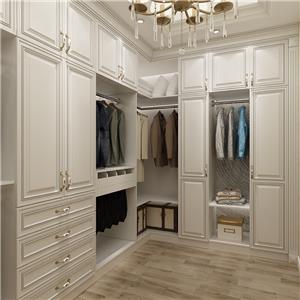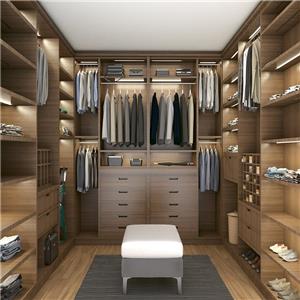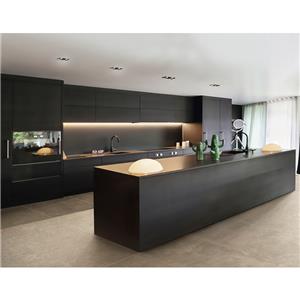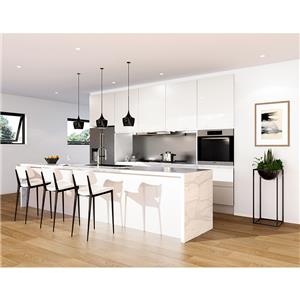A Place for Love and Deliciousness—The Complete Guide to Upgrading Your Family Kitchen in 2025
A Place for Love and Deliciousness—The Complete Guide to Upgrading Your Family Kitchen in 2025
What is a kitchen? For most families, it has long transcended its singular role as a “space for cooking.” It is the origin of the sizzling sound of morning eggs, the place where the warm aroma of evening stews fills the air, the joyful venue where the whole family collaborates to prepare festive feasts, and above all, the heart of the home that holds the warmth of family bonds, love, and daily life. Yet in reality, many kitchens face awkward dilemmas: Christmas turkeys find no place to rest, baby food utensils and adult cookware pile up in disarray, multiple cooks clash during family gatherings, and post-meal grease and mess deter even the most enthusiastic.
“A place for love and deliciousness” is never just an empty slogan—it's a vision for life achieved through scientific kitchen planning and thoughtful cabinet upgrades. 2025 home consumption data reveals that kitchen renovations have been the top choice for home refreshes for three consecutive years, with cabinet upgrades accounting for a staggering 68% of projects. This article collaborates with seasoned cabinet designers, home evaluation agencies, and 100 real-life renovation case studies to create a comprehensive, practical kitchen upgrade guide. It addresses pain points, outlines core upgrade directions, provides budget-tier solutions, highlights common pitfalls to avoid, and offers reference cases—empowering your kitchen to handle festive feasts while seamlessly adapting to everyday cooking.
I. Christmas Family Feast Pain Points: Is Your Kitchen Cabinetry Really “Sufficient”?
The unique setting of Christmas family dinners magnifies kitchen cabinet shortcomings to the extreme. Through surveying 100 households, we've identified three core pain points—see if yours is affected:
1. Storage Meltdown: The Wandering Tale of Ingredients and Kitchen Tools
“Spending half an hour searching for items and ten minutes cooking” is a common reality in many home kitchens. During daily cooking, flour and grains stored together cause cross-contamination of flavors, while spatulas and ladles are haphazardly piled in drawers, making them difficult to retrieve. During holidays like Christmas or Chinese New Year, the chaos intensifies—there's no space to refrigerate whole turkeys or large hams, baking molds and piping bags scatter everywhere, wines and champagnes lack dedicated storage, and holiday tableware ends up piled in a corner of the dining table.
Even more troubling is the issue of wasted space: cabinet corners become dead zones, requiring repeated rummaging to retrieve items stored deep inside; high wall cabinet space sits idle while frequently used breakfast cereals are stored in low drawers, creating a storage dilemma where items are neither high enough nor low enough. Ms. Chen from Beijing once complained: “Searching for a gingerbread cookie cutter for Christmas baking, I rummaged through three drawers only to find it crushed beneath pots and pans—the mold was warped, and my festive mood vanished instantly.”
The root cause lies in the inherent flaws of most cabinets: low space utilization and illogical zoning. Corner cabinets become “dead zones” where items are hard to reach; wall cabinets are too high for seniors or children to access; drawers lack dividers, leaving small tools in disarray. Ms. Lin from Hangzhou faced this awkward situation: Last Christmas, hosting relatives, she bought a turkey too large for her standard cabinet, forcing her to store it on the balcony. Searching for piping bags left three drawers in disarray, turning what should have been a cozy meal prep into a frazzled ordeal.
Data reveals that average household kitchens utilize less than 50% of their space, meaning nearly half of storage potential goes unused—the root cause of food and utensils becoming “homeless.”
2. Chaotic Workflow: The “Battlefield” Dilemma of Multi-Person Collaboration
The ideal kitchen should be a scene of collaboration: someone chopping ingredients, another frying or grilling, and a third plating and garnishing. Yet in many homes, this vision often devolves into chaos: the sink and stove are too close, making it impossible to wash vegetables without splashing the cook; counter space is so limited that hot dishes must be placed on the floor; and poorly positioned islands obstruct movement entirely.
Research reveals that 65% of households experience situations where two or more people are “at a loss” in the kitchen during family gatherings. The core issue lies in cabinet layouts failing to follow the scientific workflow of “wash-chop-cook,” with continuous work zones under 1.2 meters long, unable to accommodate multiple collaborators. Mr. Zhang from Beijing shared a similar experience: During last year's Spring Festival meal prep, his wife washed vegetables at the sink while he cooked at the stove. Their daughter wanted to hand him seasonings but couldn't squeeze into the kitchen, turning the festive atmosphere awkwardly tense.
3. Poor Durability: The Enduring Battle Against Grease and Wear
Grease from frying and grilling, water pooling around sinks, and direct contact with hot baking pans constantly test the durability of kitchen cabinets. Traditional lacquered doors easily show fingerprints and become difficult to clean once greasy; wooden countertops lack heat resistance, leaving scorch marks at the slightest mishap; and cabinets beneath sinks often lack waterproofing, leading to mold and warping from prolonged dampness.
Ms. Li from Shanghai knows this all too well: “After making braised pork, I have to wipe the cabinet doors multiple times, yet grease marks still linger. The cabinets under the sink stay damp year-round—last year I even found mold spots and had to spend thousands on repairs.” These issues not only increase daily cleaning burdens but also shorten cabinet lifespans, driving up kitchen maintenance costs.
4. Limited Functionality: Fails to Adapt to Family Growth Needs
A family's kitchen requirements evolve with life stages: Newlyweds may prioritize baking zones and beverage storage; parents need dedicated spaces for baby food tools and children's tableware; elderly residents require cabinet heights and countertop levels tailored to their needs.
Yet most kitchens are designed as “one-size-fits-all” solutions during renovation, lacking flexibility and adaptability. For instance, a baby food processor for a newborn must sit on the countertop, crowding an already cramped workspace. Elderly family members may need a stool to reach items in high cabinets, creating safety hazards. Such kitchens fail to evolve with the family's changing needs, making it difficult for them to sustain the love and delicious meals that define a home for years to come.
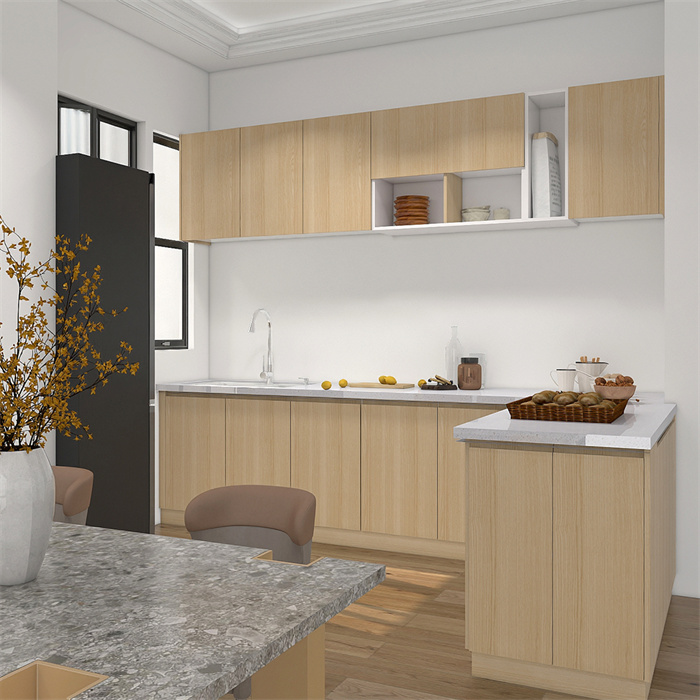
II. The Core of Kitchen Upgrades: Three Dimensions for Maximizing Space Utilization
Kitchen upgrades are not about major demolition and reconstruction, nor are they about blindly pursuing high-end materials and luxurious styles. Truly practical upgrades focus on three core dimensions: expanding storage capacity, optimizing workflow, and ensuring stain resistance and durability. By tailoring renovations to the family's actual needs, the kitchen can meet current demands while adapting to future growth.
1. Storage Upgrade: Assign Every Item Its Place
The core of storage upgrades lies in “zoning by need and maximizing utilization.” Through scientific planning, different types of ingredients and kitchenware can each find their dedicated space. Start with these three scenarios:
(1) Dedicated Zones for Bulky Items: Say Goodbye to “Nowhere to Put the Turkey”
For large items like turkeys, hams, baking sheets, and ovens, solutions include “deep cabinets with pull-out shelves” and “built-in designs.” Reserve 1-2 base cabinets with depths ≥65cm, fitted with pull-out shelves. Storing whole turkeys or large baking sheets becomes effortless—no bending over required. Yachushijia's “3D Storage System” offers valuable insights. Its corner deep cabinet design boosts space utilization by 40%, making it particularly suitable for compact living spaces.

III. Factory price
cheap kitchen cabinets

V. Good Design
compact kitchen designs
VI. Modern Style
furniture kitchen cabinets

Conclusion
residential furniture
How to buy kitchen cabinets? ➡
Exclusive Interview with Homeowner ➡
Struggling to turn around in your kitchen? ➡
Is the trend towards "de-living-rooming" design catching on? ➡

